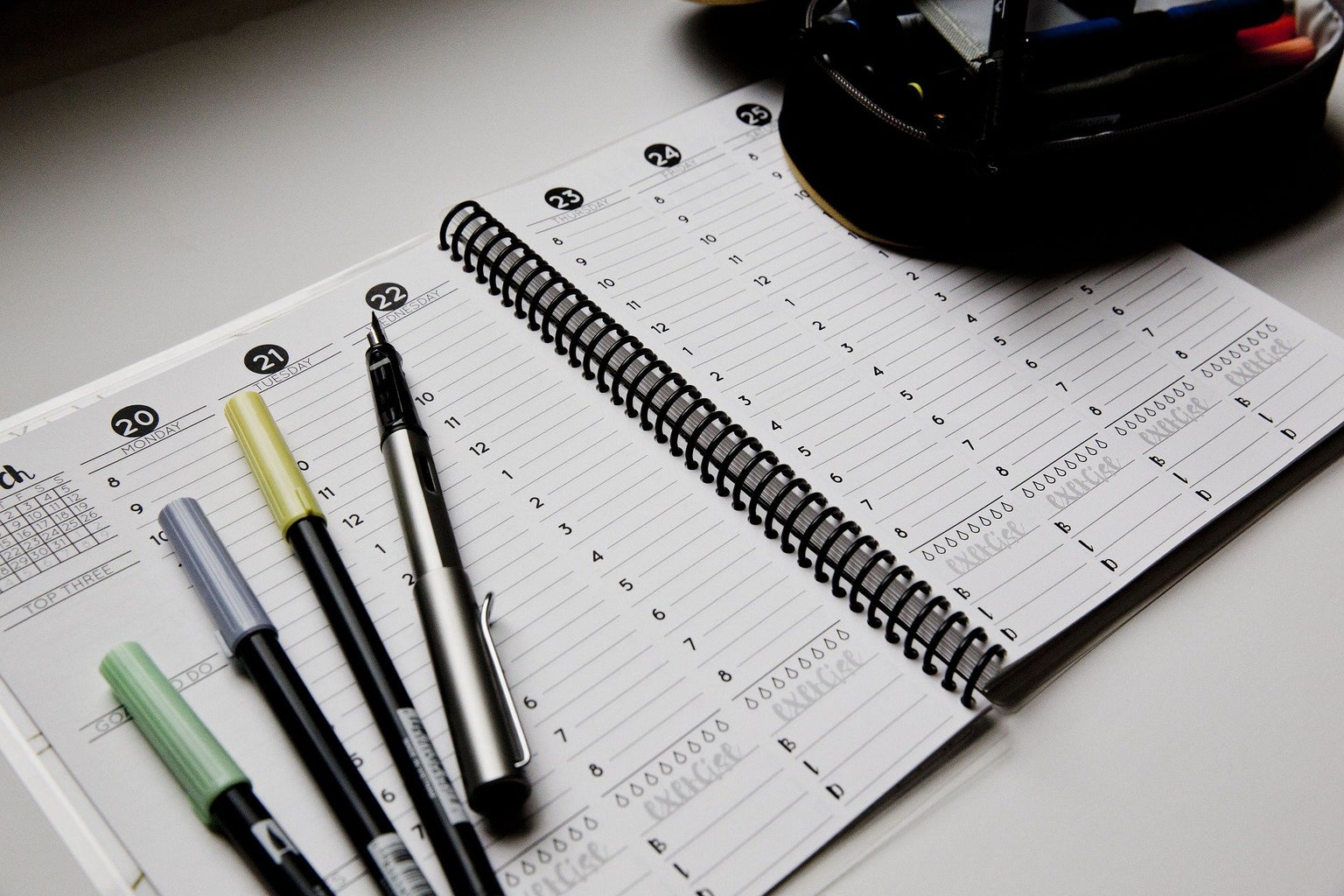I’ll admit—I’m pretty bad at keeping track of the time. Most of the time, this manifests in me spending three hours writing and re-writing the same paragraph of an article before I realize I only have fifteen minutes to respond to two other people on the discussion board before it closes at midnight (if you’re my professor reading this—just kidding). If I’m not overinvesting my attention into one thing, I’m jumping between multiple things and getting severely lost in the process. I’m guilty of being that person who has a disturbing amount of tabs open at any given time; Her Campus in one tab, Canvas in another, and so, so many Google Docs.
My college career so far has felt like a careful balancing act—more specifically, like I’m walking on a tightrope over a tank of piranhas and holding flaming torches. I fear one day I’ll lose my footing and fall, get eaten by piranhas, and set the entire circus on fire.
Well, it probably wouldn’t end up quite that bad. Either way, this week I decided to try something new in the way of time management: time blocking.
According to Todoist, time blocking is a method of time management where you divide your day up into blocks of time, then dedicate each block to a specific set of tasks. The idea is to prevent jumping around between different types of tasks so you can devote more energy to what you’re working on when you’re working on it. Time blocking is ideal on paper for college students who have to juggle classes, jobs and extracurriculars. People like me.
Getting Set Up
The first step in my time-blocking adventure was to create a schedule for the week in Google Calendar (Notion is also a great option). One goal I haven’t been able to accomplish yet this semester is to have all of my work completed before the weekend, so I can have Saturday and Sunday to relax and do whatever I’d like. I took that into consideration, as well as my other commitments, which include classes, work and Her Campus.
The easiest part of this step by far is plugging in all of the things that occur at a set time during the week. Classes, check. Work shifts, check. Her Campus meeting, check.
Now, the tricky part. Everything else.
The nature of time blocking is to be cognizant of the tasks you have to take care of. With that, there may come days when you are not able to complete all the tasks you had planned to, thus you have to adjust your time blocks for the rest of the week. Understanding this, my colorful if not slightly overwhelming time-blocked schedule and I were ready to take on the week.
The Experiment
On the first day, Monday, I hit the ground running. Perhaps it was the excitement of a change in routine, but following the times I had previously allotted came easily. I was somehow able to cram everything I needed to get done into my day, with time to spare in the evening to hit up the grocery store. I noticed, though, that even following my time blocks strictly it still felt like I was jumping between vastly different tasks. I think I felt this way because my time blocks were all quite short. Unfortunately, there’s not much I could do to change that—my time blocks have no choice but to fit the pre-made mold of my class schedule. Either way, it surprised me how I still felt slightly rushed to get everything done.
Tuesday was much of the same, but I noticed a marked difference in the urgency of my time blocks. I only have a single class on Tuesdays, which allowed me to create longer time blocks than the day before. Overall, I felt less rushed and was, again, able to complete everything on my to-do list.
Wednesday is when the cracks started to form. Although I was still devoted to my time blocks, I encountered an issue I had been nervously anticipating since Monday: simply not having enough time to complete all of my work. My blocks of time began to bleed together before they were practically obsolete at the end of the day.
I was able to get it together on Thursday, although I did have to adjust my schedule slightly to accommodate for the things I couldn’t get done on Wednesday.
By Friday, I was over it. I’m proud to say I followed through on the rather strict schedule I made for myself. It wasn’t easy, but by the end of the day on Friday I could victoriously say that “I did it!” and happily put my planner away for the weekend.
Final Takeaways
Would I commit to using a time-blocked schedule? Honestly, no.
I can’t deny that this past week has been one of the most productive weeks of my life. Every minute of every day had an express purpose, and it felt good. I felt more motivated knowing exactly how much longer I would be spending on a set of tasks. I looked back on each day with pride, happy with everything I had accomplished.
That’s all well and good, but the fact of the matter is that, for me, time blocking just won’t work.
There’s the fact that I’m a journalist and I conduct a lot of interviews. Oftentimes I won’t know when a given interview is going to occur until a day, or even hours, before it does. If I’m relying on a time-blocked schedule, I’d have to constantly be shifting my blocks around to accommodate for my change in schedule. It’s doable, sure, but it just sounds kind of annoying.
There’s also the fact that I dove into it head-first. If I do try time blocking again, I’d likely take it one week at a time. Maybe I’ll set aside two hours each day to devote toward Her Campus, for example, and leave the rest of the day up to spontaneity.
Regardless, I would never have known if I liked time blocking or not until I tried. I’m glad I did.
Tips for You
- Be okay with change. Things will come up. You’ll have to shift your schedule around a few times.
- Be aware that you probably spend more time studying than you think. I discovered this quickly. By Wednesday, I was scrambling to get everything done for my classes that I needed to.
- Allow for free time. This is important. Be it breaks during the day or plenty of time to sit back and relax in the evening, you’ll need some time to yourself. Might as well schedule it, right?
- Be realistic. A nine-hour study session on the day you don’t have any classes might sound great when you’re making your schedule, but by the time that day rolls around… let’s be realistic. Just be real with yourself!




